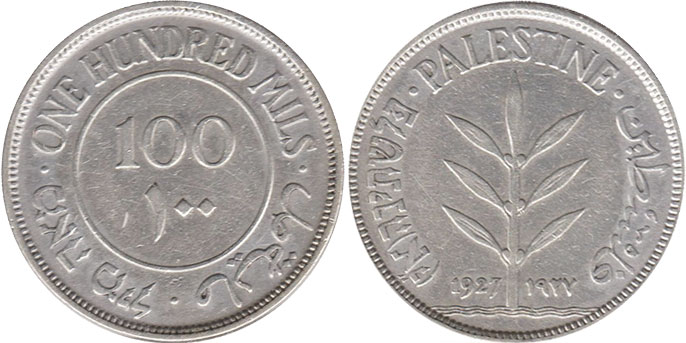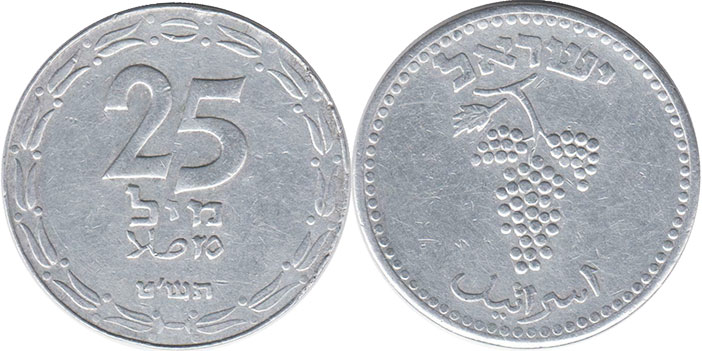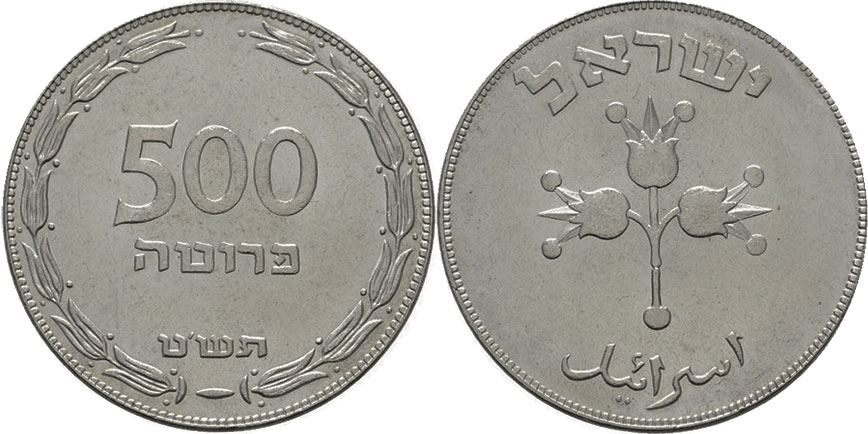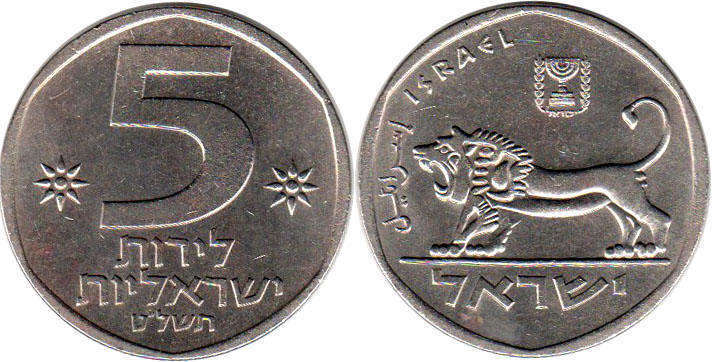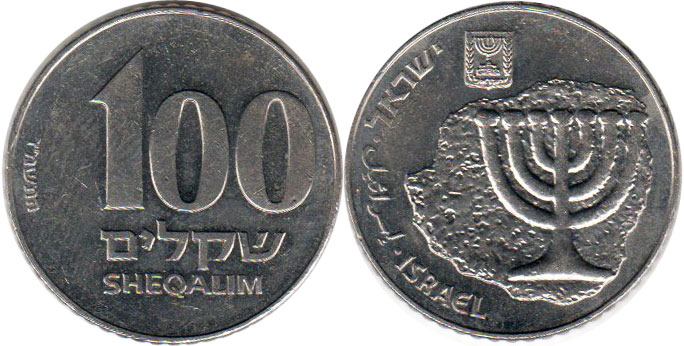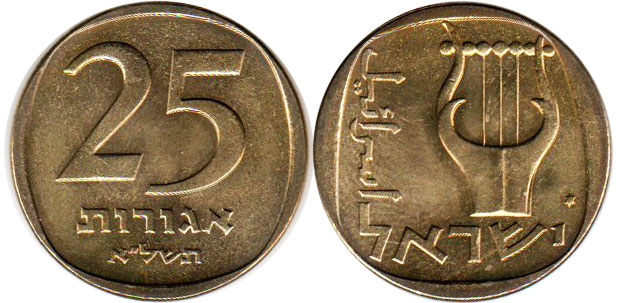Coins of Israel - catalog and price guide
Israel was founded in 1948 as a result of the partition of
the British Mandate in Palestine, formed in 1919.
Before World War I, historical Palestine (also included the territory of modern
Jordan) was
under the rule of the Ottoman Empire.
Monetary systems and coins
Palestine pound = 1000 mils (1927-1948)
Palestinian 100 mils
Until 1927, the
Egyptian pound was used in
Palestine.
More details in the catalog of
Palestinian coins.
Israeli pound = 1000 mils (1948-1951)
Israeli 25 mils
Israeli Lira = 1000 Pruta (1949-1957)
Israeli 500 prutah
More details in the catalog of Israeli coins 1948-1957.
Israeli Lira=100 agorot (1960-1979)
Israeli 5 lira
More details - in the catalog of Israeli coins 1960-1979.
Israeli Sheqel = 100 agorot (1980-1984)
Israeli 100 sheqels
For more information, see the catalog of Israeli coins since 1980.
New Israeli Sheqel = 100 agorot (since 1985)
10 new sheqels
More details - in the catalog of modern coins of Israel.
Jubilee (commemorative) coins
Commemorative Liras
The first Israeli commemorative coins were issued in 1958 -
1 lira dedicated to Hanukkah (the annual festival of the purification of the
Temple) and 5 lira for the 10th anniversary of independence.
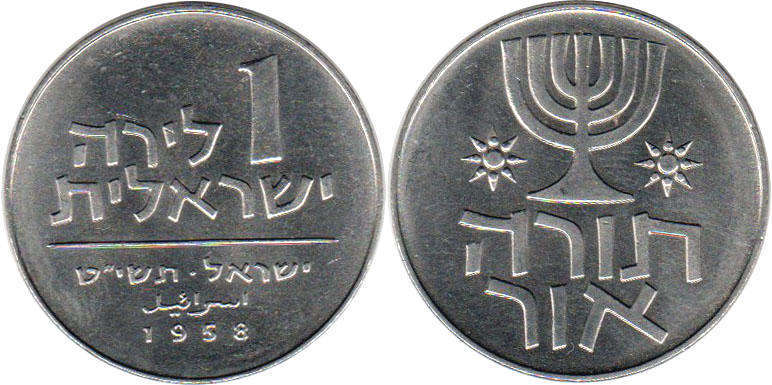
Commemorative 1 lira 1958
Years of issue of the first commemorative liras
- 1958 - 1 lira (Hanukkah) and 5 lira (10th anniversary of Independence)
- 1960 - 20 lira (Theodor Herzl's Centenary)
- 1961 - 1/2 lira (Purim holiday)
- 1962 - 50 and 100 lira (10th anniversary of Chaim Weizmann's death)
- 1967 - 10 lira (Victory in the Six-Day War) war)
- 1973 - 200 lire (25th anniversary of the Declaration of Independence)
- 1974 - 25 and 500 lire (Anniversary of the death of David Ben-Gurion)
- 1978 - 1000 lire (30th anniversary of Independence)
- 1980 - 200 and 5000 lire (Peace Treaty with Egypt and 32nd anniversary of Independence)
The series of jubilee coins 1 and 1/2 lira, 25, 10, 5, 1 agora 1973 (25th anniversary of Independence) and 1980 (25 years of the Bank of Israel) were distributed only in sets.
More details - in catalog of commemorative liras.
Commemorative Sheqels
Years of issue of the first commemorative sheqels and new sheqels
- 1980 - 1 sheqel (Hanukkah - Greek lamp), 25 and 500 sheqels (100 years of Ze'ev Jabotinsky)
- 1981 - 2 and 10 sheqels (33rd anniversary of Independence)
- 1982 - 1/2 and 5 sheqels (Holy Land Attractions - Qumran Caves)
- 1986
- 1/2 new sheqel (Baron Rothschild and Holy Land Attractions - Akko)
- 1 new sheqel (Israeli Art, Holy Land Attractions - Akko and Hanukkah - Algerian Lamp)
- 2 new sheqels (3000 years of Jerusalem and Hanukkah - Algerian lamp)
- 5 new sheqels (Art of Israel, Landmarks of the Holy Land - Akko and Hanukkah - Algerian lamp)
- 10 new sheqels (Art of Israel)
- 1988
- 1, 5 and 10 agoras (40th anniversary of Israel)
- 1996
- 20 new sheqels (Yitzhak Rabin's Death Anniversary)
- 30 new sheqels (3000 years of Jerusalem)
For more details, see the catalogue of commemorative sheqels.
Annual coin sets
The coins distributed by the Bank of Israel in the annual sets of 1958-1979 differed from the coins of the regular mintage by the presence of the Star of David on the obverse (in different places, depending on the denomination).
25 agorot from the set - the Star of David to the right of the Menorah
Since 1994, coins in sets have been distinguished by the presence of a menorah on the reverse.
10 agoras from the set - menorah above the denomination
For more details, see the coin sets catalogue.
All coins of Israel of regular minting on one page


